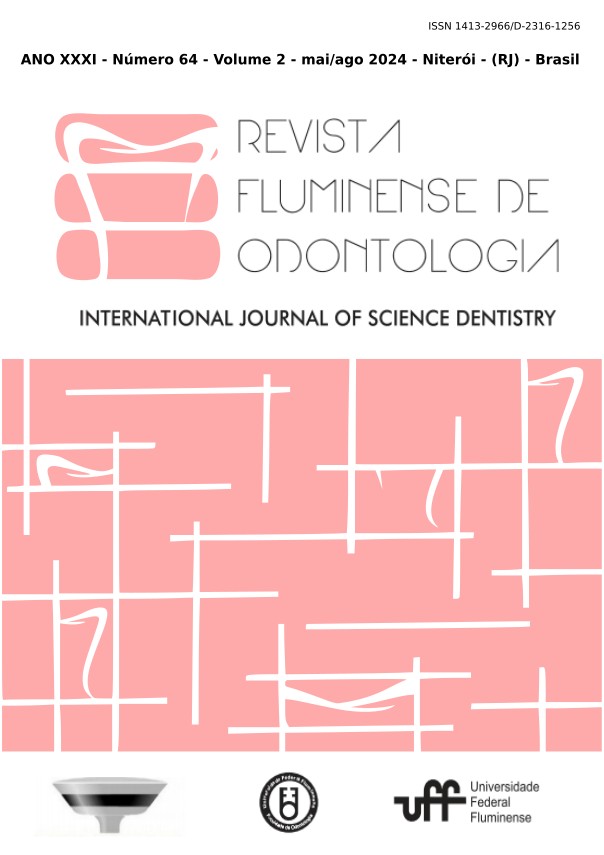MODALIDADES DE RADIOTERAPIA EMPREGADAS PARA O CÂNCER DE CABEÇA E PESCOÇO
DOI:
https://doi.org/10.22409/ijosd.v2i64.57983Abstract
O câncer de cabeça e pescoço (CCP) refere-se ao grupo de tumores que atingem a laringe, cavidade nasal, nasofaringe, orofaringe, cavidade oral e glândulas salivares. A radioterapia no paciente com CCP representa uma terapia para manutenção do órgão, através da destruição das células neoplásicas malignas. O objetivo do presente estudo foi identificar estratégias radioterápicas aplicadas ao paciente com CCP e seus respectivos efeitos colaterais em cavidade oral, além de investigar as principais modalidades utilizadas nos sistemas de saúde do Brasil. Tratou-se de uma revisão narrativa da literatura com busca ativa das bases eletrônicas PUBMED, LILACS e SCIELO. Após todas as etapas de refinamento, um total de 59 artigos foram incluídos na presente revisão. A radioterapia possui papel de destaque no tratamento do CCP. No entanto, por não ser um método terapêutico com alta especificidade, resulta em efeitos adversos ao tratamento como mucosite oral, trismo e disfunção salivar, que findam por reduzir a qualidade de vida do paciente. Dentre as principais técnicas radioterapêuticas utilizadas no Brasil, a IMRT e VMAT caracterizam-se como as formas mais avançadas da terapia em 3D, proporcionando doses equivalentes para cada área da lesão tumoral, poupando áreas teciduais circunvizinhas que não necessitam de irradiação. Além da toxicidade reduzida, uma maior sobrevida pode ser observada em pacientes tratados com essas técnicas. Um dos maiores desafios atuais na radioterapia contra o CCP é a proteção de tecidos saudáveis. Nesse sentido, a IMRT e VMAT apresentam superioridade em relação às demais técnicas.
Palavras-Chaves: Radioterapia; Radiação Ionizante; Neoplasias de Cabeça e Pescoço; Efeitos da radiação; Manifestações Bucais.





